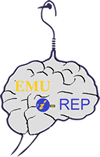ÖZ:
Bu çalışmada, acil servise başvuran farklı kronik hastalığı olan bireylerin öz etkililik düzeyleri ile aldıkları bakım değerlendirmeleri arasındaki ilişkinin
belirlenmesi amaçlanmıştır. Çalışmanın evrenini KKTC Dr. Burhan Nalbantoğlu
Devlet Hastanesi Acil Servisine 2020 Ocak-Mart aylarında gelen, kronik hastalığı olan
bireyler oluşturmuştur. Örneklem seçimine gidilmemiş, araştırma 270 hasta ile
tamamlanmıştır. Veriler “Hasta Tanıtım Formu’’, “Kronik Hastalıklarda Öz-etkililik
Ölçeği’’ ve “Kronik Hastalık Bakımını Değerlendirme Ölçeği’’ kullanılarak
toplanmıştır. Verilerin istatistiksel değerlendirilmesinde tanımlayıcı istatistikler,
Mann Whitney-U, Kruskal-Wallis H Testleri ve Sperman Korelasyon Katsayısı
kullanılmıştır. İstatistiksel anlamlılık p<,05 olarak kabul edilmiştir.
Araştırmaya katılan bireylerin, %68’inin sarı triyaja ayrıldığı, yaş
ortalamasının 65,60 ±16,06, %50,7’sinin erkek, % 75,9’unun evli, % 48,5’inin
ilkokuldan mezunu, % 51,5’inin geliri giderine denk olduğu belirlenmiştir.
Katılımcıların kronik hastalık ortalama süresinin 13,47±9,93 yıl, %59,6’sının
hipertansiyonu olduğu, %42,2’sinin hastalığı ile ilgili eğitim aldığı, %68,1’inin
hastalığına yönelik egzersiz yapmadığı, %48,5’inin beslenmesine uyduğu, bireylerin
son altı ayda hastaneye gitme sıklığı ortalamasının 3,74±2,26 olduğu ve %50,4’ünün
sağlığını orta düzeyde algıladıkları belirlenmiştir.
Kronik hastalığı olan bireylerin; kronik hastalıklarda öz-etkililik ölçeği genel
puanlarının orta düzeyde (164,5±55,4) olduğu, en düşük puanı öz-yönetim davranışları
kavramından aldıkları (5,1) belirlenmiştir. Kronik hastalık bakımını değerlendirme
ölçeği genel puanlarının orta düzeyde (62,0±14,33) olduğu, ölçeğin sadece hasta
katılımı (11,3) alt boyutundan ortalamanın biraz üzerinde puan alındığı tespit
edilmiştir. Kronik hastalık bakımını değerlendirme ölçeği ile kronik hastalıklarda öz etkililik ölçeği genel ve alt boyutları puanları arasında, pozitif doğrusal istatistiksel
olarak anlamlı bir ilişki bulunmuştur (p=000). Kronik hastalık bakımını değerlendirme
ölçeği puanları yükseldikçe, öz-etkililik ölçeği puanları da yükselmektedir. Bireylerin
yaş, eğitim düzeyi, gelir algısı, çalışma durumu, birlikte yaşanılan kişi, kronik hastalık
süresi, hastalığı ile ilgili bilgi durumu, acil servise başvuru, hastaneye yatma sayısı ve
sağlık algısı gibi tanımlayıcı özellikleri, her iki ölçeğin puanlarının sıralama
ortalamaları arasında, istatistiksel anlamlı fark yarattığı belirlenmiştir (p<,05).
Araştırmaya katılan bireylerin öz-etkililik düzeylerinin ve aldıkları bakım
memnuniyetlerinin orta düzeyde olduğu tespit edilmiştir. İki ölçek arasında, pozitif
doğrusal bir ilişki olduğu bulunmuştur. Kronik hastalığı olan bireylerin öz-etkililik
düzeylerinin ve aldıkları bakım memnuniyetlerinin belirlenmesi için daha geniş çaplı
araştırmalar yapılması, bireylerin tanımlayıcı özellikleri dikkate alınarak öz-etkililik
düzeylerini artıracak eğitim, izlem ve bakımlarında farklı yaklaşımlara öncelik
verilmesi önerilir.
In this study, it was aimed to determine the relationship between the self efficacy levels of individuals with different chronic diseases who applied to the
emergency department and the care evaluations they received. The universe of the
study is KKTC Dr. It consisted of individuals with chronic diseases who came to
Burhan Nalbantoğlu State Hospital Emergency Service in January-March 2020. No
sample selection was made, and the study was completed with 270 patients. Data were
collected using the "Patient Information Form", "Self-efficacy Scale in Chronic
Diseases" and "Patient Assessment of Care for Chronic Conditions". Descriptive
statistics, Mann Whitney-U, Kruskal-Wallis H Tests and Sperman Correlation
Coefficient were used in the statistical evaluation of the data. Statistical significance
was accepted as p<.05.
Of the individuals participating in the research, 68% were assigned to yellow
triage, mean age was 65.60 ±16.06, 50.7% were male, 75.9% were married, 48.5%
were primary school graduates, 51% were It has been determined that 5 of them are
equal to their income and expenses. The mean duration of chronic disease of the
participants was 13.47±9.93 years, 59.6% had hypertension, 42.2% received training
about their disease, 68.1% did not exercise for their disease, 48.5% It was determined
that the average of the frequency of going to the hospital in the last six months was
3.74±2.26, and 50.4% of them perceived their health at a moderate level.
Individuals with chronic disease; It was determined that the general scores of
the self-efficacy scale in chronic diseases were at a moderate level (164.5±55.4), and
they got the lowest score from the concept of self-management behaviors (5.1). It was
determined that the general scores of the patient assessment of care for chronic
conditions were at a moderate level (62.0±14.33), and the scores were slightly above
the average only in the patient participation (11.3) sub-dimension of the scale. A
positive linear statistically significant correlation was found between the patient
assessment of care for chronic conditions and the general and sub-dimension scores of
the self-efficacy scale in chronic diseases (p=000). As the patient assessment of care
for chronic conditions scores increase, the self-efficacy scale scores also increase. The
descriptive characteristics of individuals such as age, education level, income
perception, employment status, cohabitants, duration of chronic illness, information
about the disease, admission to the emergency department, number of hospitalizations,
and health perception were found to be statistically significant between the averages
of the scores of both scales. it was determined that it made a difference (p<.05).
It was determined that the self-efficacy levels of the individuals participating
in the research and their satisfaction with the care they received were moderate. It was
found that there was a positive linear relationship between the two scales. It is
recommended to carry out larger studies to determine the self-efficacy levels of
individuals with chronic diseases and their satisfaction with the care they receive, and
to prioritize different approaches in education, follow-up and care that will increase
the self-efficacy levels of individuals, taking into account the descriptive
characteristics of individuals.









